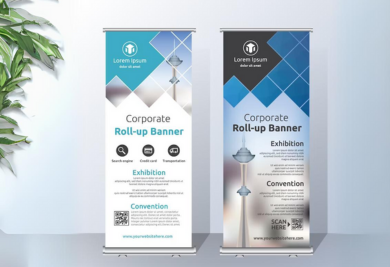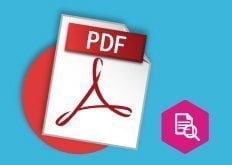
When you go through Gogoprint’s booklet web page, you will stumble across two interesting options: offset or digital booklets. Despite both being called “printing”, these production methods have their distinct differences. Here in Gogoprint, we will talk about the differences between offset and digital booklets and how it can determine which method is more suitable for your booklet project.
What is Offset Printing?
This printing method is extremely common, especially for commercial projects. If you’ve read newspapers, this printing media came from offset printing as well. The technique consists of burning your artwork onto metal plates, one for each color. Generally, 4 types of ink colors are used, mainly cyan, magenta, yellow and black — CMYK in short. Other than the well-known CMYK color mode, spot colors (pantone) are sometimes used as well.
That said, the function of the plates is to transfer your artwork onto rubber rolls. Using CMYK ink, all four colors are spread across the rubber and the paper is then run between them. After the paper passes through all 4 of the color rolls, the final image will be produced.
For more information regarding offset printing, you can check out our other article.

What is Digital Printing?
Unlike offset, digital printing does not require plates, rubber or any of the complicated process. Rather, it functions similarly as your office printer, whether it is an inkjet or a laser jet. Basically, it simply applies your artwork directly on to the paper itself, using ink either in liquid or powdered form. Of course unlike office printers, the printers used by big printing companies are much faster, bigger, and more precise.

Digital vs Offset Booklets
Usually, the final printed booklet appears very similar when it comes to these two production methods. However, there are a few factors that differentiate between the two printing methods, which may affect your decision on your next book project:
1. Quantity
If you’re looking into a big amount of booklets, offset printing is the way to go. Our website offers to print around 500 to 10,000 booklets. Not to mention, the more books you print, the lesser cost it gets! Digital booklets on the other hand, gives you the option to print as little as 5 pieces. If you have a small book project, printing your booklets digitally is the more flexible choice.

2. Quality
Quality wise, offset booklets give better quality because they offer more color options, accuracy and balance. While digitally printed books use normal, standard ink that may not have good color coverage. That said, digital printing has been slowly improving over the course of time.
Overall, the printed results from offset and digital are different. If you’re wondering why the color of your books appear different when you print them in different settings / times, this would be your answer.

3. Budget
Generally, the cost effectiveness of printing booklets depends on how big, or small your project is. If you’re looking into smaller quantities, digital printing is the optimal choice. Which is why small ventures or personal projects are recommended to print digitally! Whereas in larger projects, printing offset booklets will be more economical.

4. Urgency
If you’re in a rush for the booklets, digital printing should be your go-to option. In addition, digital printing uses ink or toner that dries instantly. As offset printing is usually for longer print runs, it will most likely take longer for press time.

Conclusion
We hope the above information can help you settle on which method you want to opt for when printing your booklets. While the differences don’t seem to matter to some, choosing the right technique for your next printing project can make a huge deal. Now that you’ve know more about digital and offset booklets, If you’re ready to tackle your next book project, head over to our website and print away!


















